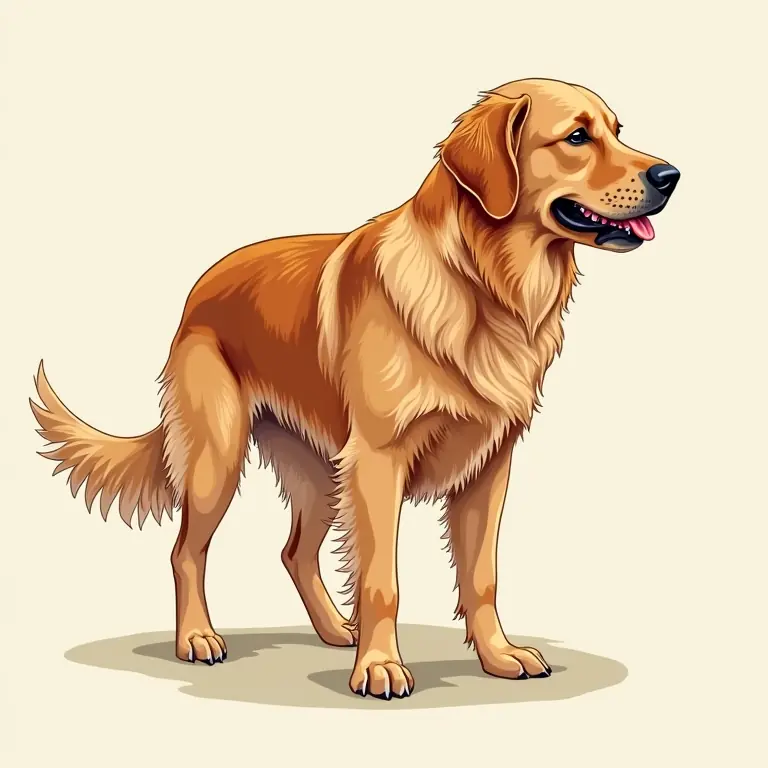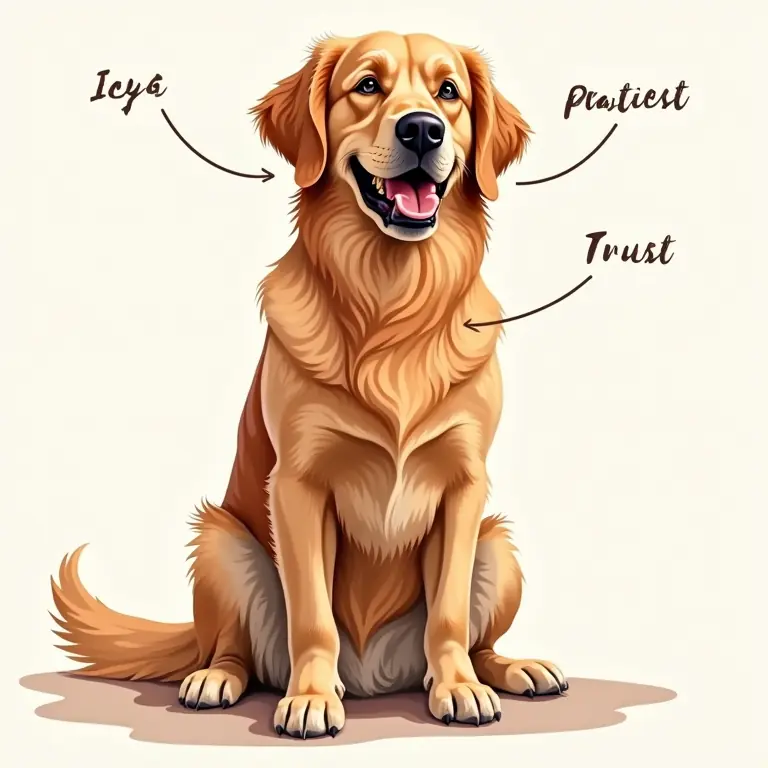Decode Your Dog: A Friendly Guide to Understanding Canine Body Language
Our canine companions enrich our lives in countless ways. Their loyalty, affection, and playful energy bring joy to our homes. But how well do we truly understand them? While verbal communication is one-sided, dogs are constantly communicating with us through a complex language of body language. Learning to ‘read’ your dog isn’t just about preventing bites; it’s about deepening your bond, understanding their needs, and ensuring their well-being. This guide will provide a comprehensive, yet friendly, overview of canine body language, helping you become fluent in ‘dog.’
Why is Understanding Dog Body Language Important?
Misinterpreting dog body language can lead to misunderstandings, stress for both you and your dog, and potentially dangerous situations. A dog displaying subtle signs of stress might be labeled as ‘stubborn’ or ‘disobedient’ when they’re actually trying to communicate discomfort. Recognizing these cues allows you to respond appropriately, creating a safer and more harmonious relationship. It’s also crucial for anyone interacting with dogs – children, visitors, or even other dog owners. Being able to assess a dog’s emotional state is a vital skill for responsible pet ownership.
The Foundation: Overall Posture
A dog’s overall posture is the first piece of the puzzle. It gives a broad indication of their emotional state. Here are some common postures and their general meanings:
- Relaxed: A relaxed dog will have loose muscles, a neutral tail carriage (not tucked or rigidly held), soft eyes, and ears held naturally. Their weight is evenly distributed, and their mouth may be slightly open.
- Playful: This posture is characterized by a ‘play bow’ – front legs lowered, rear end up, and often accompanied by a wagging tail. The dog may bounce or prance.
- Alert: An alert dog stands with their body stiffened, ears pricked forward, and eyes focused. Their tail may be held high and still. This doesn’t necessarily mean they’re aggressive, just that they’re paying close attention to something.
- Fearful: A fearful dog will often lower their body to the ground, tuck their tail, and flatten their ears. They may also lick their lips frequently or show the whites of their eyes (whale eye).
- Aggressive: An aggressive dog will stand tall and stiff, with a hard stare and possibly a wrinkled muzzle. Their lips may be curled, and their tail held high and stiff or slowly wagging.
Decoding the Tail: More Than Just Wagging
The tail is often the first thing people look at when trying to read a dog, but it’s surprisingly complex. A wagging tail doesn’t always mean a happy dog! The speed, height, and direction of the wag all contribute to the message.
- Wide, sweeping wag: Generally indicates happiness and friendliness.
- Fast, short wags: Can indicate excitement or arousal, but not necessarily positive. It could also signal anxiety.
- Slow, deliberate wags: Often a sign of insecurity or caution.
- Tail tucked between the legs: Indicates fear, anxiety, or submission.
- High, stiff tail: Can signal dominance or aggression.
- Neutral tail carriage: A relaxed and comfortable state.
The Language of the Eyes
Eyes are incredibly expressive and offer significant clues to a dog’s emotional state.

- Soft gaze: A relaxed and comfortable dog will have a soft, gentle gaze.
- Hard stare: A direct, unblinking stare is often a challenge or a threat. Avoid direct eye contact with a dog you don’t know well.
- Whale eye: Showing the whites of the eyes (often a crescent shape) indicates stress, fear, or discomfort. The dog is trying to avoid direct eye contact.
- Avoiding eye contact: Can indicate submission or appeasement.
- Blinking: Slow blinking can be a sign of affection and trust. Try slowly blinking at your dog – they might blink back!
Ears: Listening In on Emotions
Ear position is another important indicator. However, ear shape plays a role; dogs with floppy ears have less range of movement than those with erect ears.
- Ears forward: Alertness, interest, or possibly aggression.
- Ears back: Fear, submission, or appeasement.
- Ears relaxed: A comfortable and relaxed state.
- Ears swiveling: Listening intently to sounds.
Mouth and Facial Expressions
A dog’s mouth can reveal a lot about how they’re feeling.
- Relaxed mouth: Slightly open, with a soft expression.
- Lip licking: Often a sign of stress, anxiety, or appeasement. It can also be a displacement behavior (a behavior used to cope with stress).
- Yawning: Similar to lip licking, yawning can be a sign of stress, not necessarily tiredness.
- Panting: Can be due to overheating or excitement, but also can signal stress.
- Showing teeth: Usually a warning sign of aggression, but can also occur during a ‘submissive grin’ where the dog lowers their head and shows their front teeth. Context is key.
- Wrinkled muzzle: Often seen when a dog is preparing to bite or growl.
Body Tension: The Subtle Signals
Beyond the obvious cues, pay attention to subtle signs of body tension.
- Stiffening of the body: Indicates alertness, anxiety, or potential aggression.
- Trembling: Can be caused by fear, cold, or excitement.
- Raised hackles: The fur along the back of the neck and spine stands up, indicating arousal (can be fear, excitement, or aggression).
- Muscle tension: Feel your dog’s muscles – are they tight and rigid, or loose and relaxed?
Displacement Behaviors: When Dogs Are Feeling Conflicted
Displacement behaviors are normal behaviors performed out of context, often indicating stress or conflict. These are actions a dog might do to release tension.

- Scratching: Scratching when not itchy.
- Shaking off: Like shaking water off, even when dry.
- Sniffing the ground: Sniffing intently when not actively tracking a scent.
- Yawning: As mentioned before, yawning can be a displacement behavior.
- Lip licking: Another common displacement behavior.
Putting It All Together: Reading the Whole Dog
It’s crucial to avoid focusing on just one signal. Dog body language is a holistic system. You need to consider all the cues – posture, tail, eyes, ears, mouth, and body tension – to get an accurate read of what your dog is trying to communicate. For example, a wagging tail combined with a stiff body and hard stare doesn’t indicate happiness; it suggests a potentially aggressive dog.
Context is King
Always consider the context of the situation. A dog who is alert and stiff while guarding their food bowl is displaying a different message than a dog who is alert and stiff while playing fetch. What’s happening around the dog? What has just happened? These factors all influence their behavior.
Individual Differences
Just like people, dogs have individual personalities and communication styles. Some dogs are more expressive than others. Get to know your own dog’s unique ‘language’ and what their individual signals mean. What might be a subtle sign of stress in one dog could be more pronounced in another.
Learning Resources & Further Exploration
This guide provides a foundation, but there’s always more to learn! Here are some resources to continue your journey:
- Books: “On Talking Terms with Dogs: Calming Signals” by Turid Rugaas is a classic.
- Websites: The American Kennel Club (AKC) website has helpful articles on dog behavior.
- Professional Trainers: Consider consulting with a certified professional dog trainer for personalized guidance.
Improving Communication with Your Dog
Understanding your dog’s body language isn’t just about decoding their signals; it’s about improving your communication with them. By being attentive and responsive to their cues, you can build a stronger, more trusting relationship.
Beyond Decoding: Building a Harmonious Relationship
Once you understand how your dog communicates, you can begin to create a more enriching and harmonious environment. This could involve providing them with more mental stimulation, ensuring they have a safe and comfortable space, and respecting their boundaries. If you’re looking to create a cozy space for your furry friend, check out this guide to basic upholstery. Understanding your family history can also strengthen bonds, just as understanding your dog does – explore genealogical research to learn more. And if you’re feeling overwhelmed, remember the power of a tidy space to reduce stress, as explored in this guide to the KonMari method.
Final Thoughts
Learning to decode your dog’s body language is an ongoing process. Be patient, observant, and always prioritize your dog’s well-being. The effort you put into understanding them will be rewarded with a deeper, more fulfilling relationship. Remember, they rely on us to understand their needs, and by becoming fluent in ‘dog,’ we can provide them with the best possible life.


Discussion about this post